Ordained by God
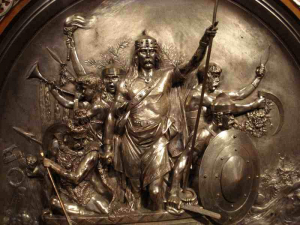 In the fourteenth century there was a belief that the “right to rule” had been ordained by God. This belief originated in the raising of Clovis of the Franks to the position of King. Onlookers at the time looked at the appointment with disbelief, surely there had to be some special reason for Clovis’ appointment?
In the fourteenth century there was a belief that the “right to rule” had been ordained by God. This belief originated in the raising of Clovis of the Franks to the position of King. Onlookers at the time looked at the appointment with disbelief, surely there had to be some special reason for Clovis’ appointment?
In 486, Clovis, the teenage leader of a minor tribe, was given the approval of Felix, Bishop of Rome, to take control of the Western Roman Empire. It could not have been an easy decision to take. Pope St Gelatius, one of the Popes involved in the early dealings with Clovis, gives us a glimpse of his dilemma in a letter he wrote to Anastasius, the Eastern Emperor of the time.
“There are two powers, August Emperor, by which this world is chiefly ruled, namely, the sacred authority of the priests and the royal power. Of these that of the priests is the more weighty, since they have to render an account to God, in their own personal divine judgment, for even the kings of men,.”
The Franks
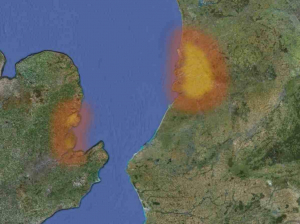
Clovis’ tribe, the Salian, (Saline, Salty) Franks, were, and had been for generations, a maritime nation. They were almost certainly Celtic, but were lumped together with their near neighbours, the Ripuarian ( River) Franks of Germanic origin, simply because of their geographical proximity. For centuries they had been monopoly controllers of virtually all shipping between Gaul and Britain. It is probable that the final successful Roman invasion of Britain in 43, was carried out in Frankish ships. They had close relationships with the Celtic tribes in Briton and may have brokered a deal with the Triumvertes, which made the invasion possible.
Their continued dominance of cross-channel trade was achieved by providing an efficient service operating out of their home base in the Rhine Delta, roughly corresponding to the Netherlands of today. Their corresponding base in Britain was to the north of the Thames estuary, possibly on Mersea island, using the Colne and Blackwater rivers.
The Salian Franks reinforced their control of channel navigation by operating a system of protectionist piracy along the majority of the coasts of the channel. It was a model, which would be copied by all the inhabitants of the same geographical area, right through to the 1500’s.
Their home bases on both sides of the channel, surrounded as they were by lakes and swamps, esturinal mud and marsh were virtually unassailable from land. These lands were known in myth lrdend and in reality as the wastelands. Because of this insulation from outside events. The Franks were relatively undisturbed by the Romans and the subsequent waves of Germanic peoples who had journeyed west into the rest of Gaul causing varying degrees of disruption.
The Conquest of Gaul
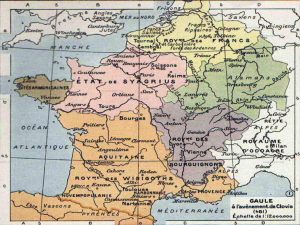 Fig 01 Gaul at the time of Clovis.
Shows the limited area under control of the Franks at the time Clovis received the Pope's accolade. In the years leading up to 486, in order to gain a bigger power base, gain ports to the west of the Frankish homeland and to further improve the defence of all his possessions, Clovis had successfully incorporated the surrounding tribes under his control, sweeping their leaders to one side. However, his was still a relatively minor kingdom compared with those carved out by the Germanic tribes of Goths, Burgundians , Sueves and Vandals.
Fig 01 Gaul at the time of Clovis.
Shows the limited area under control of the Franks at the time Clovis received the Pope's accolade. In the years leading up to 486, in order to gain a bigger power base, gain ports to the west of the Frankish homeland and to further improve the defence of all his possessions, Clovis had successfully incorporated the surrounding tribes under his control, sweeping their leaders to one side. However, his was still a relatively minor kingdom compared with those carved out by the Germanic tribes of Goths, Burgundians , Sueves and Vandals.
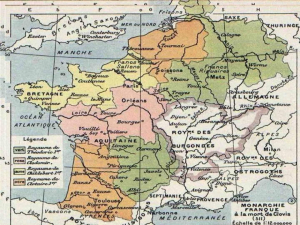 Fig 03 Kingdom of Franks at death of Clovis
Shows the way that in the tradition of the Franks, Clovis empire was sub divided amongst his children. Worse they then declared war on each other in an attempt to increase their share!
Fig 03 Kingdom of Franks at death of Clovis
Shows the way that in the tradition of the Franks, Clovis empire was sub divided amongst his children. Worse they then declared war on each other in an attempt to increase their share!
Despite these inauspicious beginnings, within ten years Clovis was in control of the majority of Gaul.His family were regarded as the rightful Kings of Gaul, to be renamed “Frankia” and eventually much of the Germanic lands. The dynasty he founded lasted for four hundred and fifty years. Much of his success was due to the extraordinary support he received from the Bishops of Rome.
An Intriguing Choice

The choice of Clovis as not only the successor of Rome but the champion of the Church of Rome was an intriguing choice.
Admittedly Franks had served in the Roman army. At least two of their leaders, Arbogast and Bauto had reached the rank of Magister Militum in the western empire. These had not, however, been happy experiences for the Roman Empire. A Caesar had been murdered, and a revolt had made it necessary for a full scale invasion of the west from Constantinople.
One would have thought that as the Bishop of Rome, Miletus would have thrown his weight behind the Roman General, Syagrius, who still controlled most of what is now Northern France. Syagrius was by reputation a wise and progressive ruler who had substantial support from the western provinces of Roman Britain. Syagrius had however clashed with the Franks in an attempt to break their monopoly of cross-channel trade.
Alternatively, there was Gundobad, the king of the Burgundians, who had also served successfully as a Roman General.
Finally if he had bided his time just a few years, there was the outstanding candidate. Theoderic, King of the Ostrogoths, Champion of Rome, Roman law and all things Roman. Educated in Constantinople, Theoderic was the king of Italy, recognised as Caesar of the West by the Byzantine, Eastern Empire. He was the effective ruler not only of Italy, but because he was the appointed regent for the young king of the Visigothic empire, he also effectively controlled South West Gaul and Hispania. By virtue of his defeat of the Vandals he was the master of North West Africa. Not only that, but St Gelasius apparently worked well with Theoderic, with whom he had regular commuications.
Theodoric was a trinitarian christian, supposed the same faith.
Nevertheless, Clovis’ approval carried over to a third and forth Pope, Anastasius and Symmmachus. It must be concluded that the Church of Rome, even at this early date, wanted to separate from the Orthodox Christian faith.
Descent from Jesus
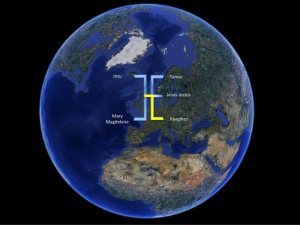 Fig 08 The children of Jesus
All these Franks and by the time of Dagobert II there must have been thousands of them were reputed to be direct descendants of "The Children of Jesus"
Fig 08 The children of Jesus
All these Franks and by the time of Dagobert II there must have been thousands of them were reputed to be direct descendants of "The Children of Jesus"
They did not want this motivation to become public knowledge, so they looked for a different explanation. Ultimately the alternative explanation became common knowledge. No one is really sure whether it originated with Clovis himself, his advisors or the Church but it was generally accepted.
 Fig 09 In England's green and pleasant landThe legend says that several of Jesus relatives married into British Royal Families. It is the line from Jesus' son Josophes that the line to the Merovingians started. Just think of the words of the Hymn "Jerusalem".
Fig 09 In England's green and pleasant landThe legend says that several of Jesus relatives married into British Royal Families. It is the line from Jesus' son Josophes that the line to the Merovingians started. Just think of the words of the Hymn "Jerusalem".
It was explained that Clovis was descended from Jesus and therefore had the right to rule. This was never specifically denied by the Church of Rome and was actively encouraged by Clovis’ Merovingian descendants.

All bases were covered however in the Franks subsequent dealings with Vikings, who made increasingly frequent raids on the Channel coast. The Franks then did not hesitate to claim that they were descended from a god of the sea. Presumably they thought this alternative would be more impressive to a pagan audience.
Clovis’ ancestor Merovich was said to have had two fathers, his mother having been impregnated by a sea monster/god whilst swimming. Thus those who would not accept christianity could still believe in the Merovingians as “Sons of God”.
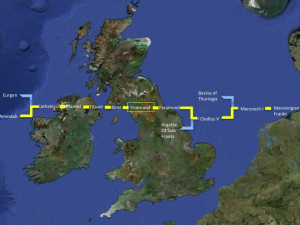 Fig 10 The Fisher Kings
Generation after generation of Kings who do not appear other than in legend. They lived in the 'wastelands' and suffered from severe sickness or injury.
Fig 10 The Fisher Kings
Generation after generation of Kings who do not appear other than in legend. They lived in the 'wastelands' and suffered from severe sickness or injury.
Leaving that to one side, the descent from Jesus, as described was in itself largely mythical, involving visits of the holy family to Britain, intermarriage with local rulers and the bloodline then passed through the “Fisher Kings” who dwelled in the “wastelands” to the Merovingians, Clovis ancesters.
Genealogy
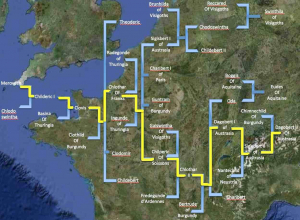
It would appear these theories of messianic descent were first formally documented in the 13th century.
It is also claimed that they are echoes of the same stories in the British/Welsh histories, from a much earlier time, perhaps concurrent with the rise of the Franks.
The Donation of Constantine
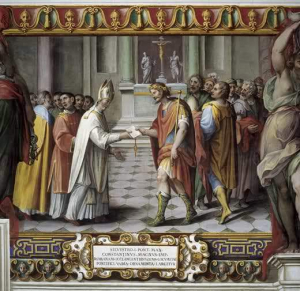
There was another aspect of the Pope’s appointment of Clovis which needed clarification. For centuries the church made use of a document called the ‘Donation of Constantine’ to justify their right to appoint temporal rulers. The church claimed this document showed that Constantine the Great had given temporal control over the whole of the Western European Empire to the Pope in Rome.
Retrospectively this document was used to defend the popes right to choose clovis( and to interfere in the affairs of other kings.)
This document is at the very least open to interpretation. It appears to appoint the Pope to be temporal ruler of Rome and then Italy and the “Western Districts”. The “Western Districts” would not be a term used to describe the Western Empire, it sits much better as meaning the Western districts of Italy, perhaps Sicily. In any case the document has since been proved to be one of the most outrageous forgeries in history!
Investigations now date it to 750, about the time that Pepin the short deposed the Merovingians. Its origins are purported to be the scriptorium at St Denis in Paris which would make it a creation of Pepin and have no bearing on the selection of Clovis although the argument may well have preceded the forgery.
Clovis’ Baptism
The church then perpetrated another forgery. A letter, supposedly written by Pope Anastasius, congratulated Clovis on his baptism in the Roman Church. Recent investigations have proved this second forgery was executed much later, perhaps at about the same time the original forgery was exposed, about 1550.
